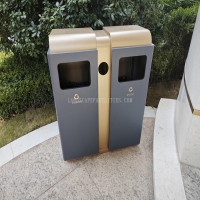Welcome to the website for landscape facilities products and knowledge.
What are the key differences between using basalt and sandstone for landscape tables?
When selecting natural stone for landscape tables, basalt and sandstone are two popular choices, each offering unique advantages. Understanding their differences can help you make an informed decision for your outdoor space.
1. Durability and Strength
Basalt is an igneous rock known for its exceptional hardness and resistance to weathering, making it ideal for high-traffic outdoor areas. Sandstone, a sedimentary rock, is softer and more porous, which may require sealing to prevent wear over time.
2. Aesthetic Appeal
Basalt typically features a dark gray to black color with a fine-grained texture, lending a modern, sleek look. Sandstone offers warm hues like tan, brown, or red, with a naturally rustic appearance due to its layered formation.
3. Maintenance Requirements
Sandstone’s porosity makes it prone to staining, requiring regular sealing. Basalt, being denser, demands less maintenance but can show scratches more visibly due to its dark color.
4. Cost and Availability
Sandstone is generally more affordable and widely available, while basalt’s durability and unique appearance often come at a higher price point.
5. Suitability for Climate
Basalt excels in harsh climates due to its frost and heat resistance. Sandstone may crack in freezing conditions unless properly treated.
Choose basalt for longevity and a contemporary vibe, or opt for sandstone for a cost-effective, earthy aesthetic. Your decision should align with your design goals and environmental conditions.
Related search:

Recommendation
Double-bucket garbage bin, outdoor, metal, multi-color, powder-coated, double-bucket trash can